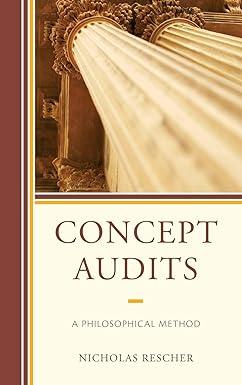Answered step by step
Verified Expert Solution
Question
1 Approved Answer
Consider the following table, where the unit of observation is an individual, and the dependent variable in each regression is annual income in dollars. Each
- Consider the following table, where the unit of observation is an individual, and the dependent variable in each regression is annual income in dollars. Each column represents a separate regression. The standard errors of the coefficients are reported in parentheses. Female is a dummy variable which equals 1 if an individual is female; and equals 0 otherwise. [15 marks]
| Dependent Variable: Income in Dollars | Model 1 | Model 2 | Model 3 | Model 4 |
| Years of Schooling | 4362.88*** | 4364.63*** | 5243.88*** | 5188.76*** |
| (1214.52) | (1242.74) | (1439.94) | (1625.75) | |
| Female | -2324.86*** | -2924.86*** | ||
| (861.57) | (1061.27) | |||
| Female X Years of Schooling | 1126.83*** | |||
| (323.42) | ||||
| Province Fixed Effects | No | Yes | No | No |
| Adjusted R-squared | 0.256 | 0.253 | 0.297 | 0.311 |
| Observations | 106,222 | 106,222 | 106,222 | 106,222 |
| * p<0.10, ** p<0.05, *** p<0.01 |
- Do province fixed effects explain any variation in the dependent variable? [1 mark]
- Does including province fixed effects mitigate any omitted variable bias concerns? [1 mark]
- Interpret the two coefficients in model 3. [3 marks]
- The variable Female is negatively correlated with the dependent variable, and positively correlated with the variable Years of Schooling. In light of this, explain the change in the coefficient on Years of Schooling from Model 1 to Model 3. [1 marks]
- Interpret the coefficient on the variable Female X Years of Schooling in model 4. [3 marks]
- What is the total effect of one additional year of schooling on annual income for women, based on the results shown in the table? [3 marks]
- Consider another dummy variable Male, which equals 1 if an individual is male and equals 0 otherwise. If you accidentally added this variable to the regression in model 3, which OLS assumption will be violated? [1 mark]
- Describe a visual test that you would conduct to examine whether errors are heteroskedastic in model 1. When will you conclude that errors are homoskedastic? [2 marks]
Step by Step Solution
There are 3 Steps involved in it
Step: 1

Get Instant Access to Expert-Tailored Solutions
See step-by-step solutions with expert insights and AI powered tools for academic success
Step: 2

Step: 3

Ace Your Homework with AI
Get the answers you need in no time with our AI-driven, step-by-step assistance
Get Started


